As a personal trainer who’s been in the game for over almost a decade, I’ve receivedplenty of questions from clients on lifting gear. One recurring query is on lifting straps versus wrist wraps, their differences, and when to use each.
The primary difference is that wrist wraps stabilize your wrist joints during training, leading to a safer and more comfortable experience when handling heavy loads. In contrast, lifting straps tie your hands to the weight, be it a barbell, dumbbell, or something else, to improve your gripping ability.
Both are useful training tools, but knowing when and how to use them correctly is crucial for getting the most out of them and minimizing the risk of injury or dropping a heavy weight mid-set.
Key Takeaways:
- The purpose of wraps is to compress your wrists to the point where you cannot move them much. Doing so would provide stability and prevent joint stress that could otherwise cause pain.
- The primary benefits of lifting straps are that you can hold onto more weight, prevent your grip from being a limiting factor, and possibly improve back muscle activation.
- Despite their simplicity, understanding the nuances surrounding straps and wraps is crucial for knowing when and how to use each for the best training effect.
What Are Wrist Wraps?

Wrist wraps are long pieces of elastic fabric material you wrap around your wrists to prevent them from bending when doing pressing movements: bench press, overhead press, etc.
The purpose of wrist wraps is to put your joints in a cast, preventing them from bending when using heavy loads. Doing so keeps the wrist safe and neutral even when lifting near-maximal loads.
“Wrist wraps are a type of training equipment used in weightlifting to support the wrists and reduce compression forces. They’re typically there to brace the wrist, contribute added stability, and keep the softer tissues from compressing under load.”
-Oleksiy Torokhtiy, an Olympic Gold Medalist in weightlifting
Most wrist wraps consist of three things:
- A long piece of elastic material
- A thumb loop
- Velcro to lock the wraps in position
What Are Lifting Straps?

Lifting straps, also known as wrist straps (not to be confused with wrist wraps), are long pieces of fabric material you place over your wrists and wrap over an external weight, typically a barbell.
The primary purpose of lifting straps is to support your grip, allowing you to hold onto more weight than you otherwise could. For example, if your grip is a limiting factor, but you’re otherwise strong, you can use straps to hold onto more weight during deadlifts.
Lifting straps don’t stretch like wrist wraps and don’t have a velcro closure at the end. You simply take one end, feed it through the loop on the opposite side, and put your hand through.
5 Differences Between Wrist Wraps vs. Lifting Straps
1. Purpose
The primary difference between wrist wraps and lifting straps is their purpose. Wraps loop over your wrists several times to provide compression and keep the joints stable during your training.
In contrast, lifting straps support your grip and allow you to hold more weight on various exercises, such as deadlifts, shrugs, and bent-over rows.
2. Material
Lifting straps consist of strong, durable, and non-stretchy material, usually nylon with neoprene padding for comfort. In contrast, wrist wraps are meant to provide some elasticity and therefore consist of elastic material alongside polyester or similar.
3. Use
The way you use a wrist wrap is by securing your thumb in the loop and wrapping the long piece of fabric around your wrist before locking it into position with the Velcro at the end.
In contrast, you bring your hands inside the lifting strap loops, wrap the long pieces of fabric around the barbell, and grip everything before initiating the set.
We’ll go in-depth on how to use wrist wraps and straps below.
4. Target Exercises
Wrist wraps are generally most useful for pressing exercises (bench press, overhead press, etc.), where you expect your wrists to bend because of a heavy load. In contrast, lifting straps work best on pulling exercises (deadlift, barbell row, etc.) where you struggle to hold onto the external weight.
5. Competition
Wrist wraps are legal in every reputable powerlifting federation, whereas lifting straps are not.
- Related Article: How to Choose a Lifting Belt for Big Guys (Plus, 3 Picks)
Wrist Wraps 101: What You Need To Know

Benefits of Wrist Wraps
- Wrist stabilization
- Lower injury risk
- Ease discomfort
- Durable and last for many years
- Simple to use
Drawbacks
- You can become over-reliant and struggle to press heavy weights without them
- They can cut off the blood supply to your hands if you wrap them too tightly
Who Should Use Wrist Wraps?
Every lifter looking to stabilize their wrists and reduce the injury risk can use wrist wraps during some of their training sets. Wraps are easy to use, and trainees can wrap them more tightly or maintain some looseness, depending on their needs.
When to Use Wrist Wraps
Like any fitness accessory, wrist wraps are helpful in some conditions but can become a crutch if overused. I recommend wrist wraps for your heaviest sets, where your wrists bend under the load.
For example, you can do your lighter sets without wraps and start using them once you lift 75-80+ percent of your 1RM. That way, you still do enough sets without wraps, and they support your joints during the most challenging work.
You might use your wraps on more sets if you experience wrist pain. Immobilizing your joints temporarily can help prevent further damage.
You should only use wrist wraps for pressing movements, such as the bench and overhead press. One exception is the low-bar back squat, where your wrists can bend significantly by supporting the barbell.
How To Wear Wrist Wraps Properly

Wrist wraps are made for the left and right hand, so be mindful when putting them on. Ensure that the thumb loop aligns with your thumb when you place the wrap on your wrist with your palm facing down.
Here is how to put on a wrist wrap:
-
Put your thumb through the loop and lay the wrap on your wrist at the base of your hand.
-
Pull the end of the wrap relatively hard and loop it over the base of your hand, making sure to cover the wrist.
-
Loop the wrap over your wrist again, pulling it slightly harder to ensure a tight fit.
-
Do a final loop around your wrist, pulling it even harder, and secure the end with Velcro.
- Perform the same thing for your opposite wrist and remove the loops from your thumbs.
I recommend loosening up the wraps between sets, especially when resting over 2.5 to 3 minutes, to allow optimal blood flow to your hands. Plus, wraps tend to be somewhat uncomfortable, you only need them while doing reps, and they take 30 seconds to put on.
My Recommendation on Wrist Wraps
1. Gymreapers Wrist Wraps - 18" Weightlifting Wrist Support
The 18” wrist wraps by Gymreapers are ideal for most people who don’t press absurd amounts of weight. These wraps are long enough to cover the base of the hands and wrists, immobilizing the area and reducing the risk of bending.
To ensure safety, the wraps have undergone extensive testing by world-class weightlifters. They consist of high-quality materials and now come with enhanced stitching to ensure durability.
You can pick these up in nine colors, including gray, green, and camo.
2. Gymreapers Stiff Wrist Wraps - Heavy Duty Wrist Support
For people in need of even more wrist support, Gymreapers offer heavy-duty wraps. These are excellent for strong powerlifters and folks with previous wrist injuries.
What sets these wraps apart is that Gymreapers use reinforced elastic material and stiffer cotton. The thumb loop is also thicker and reinforced, which ensures durability throughout the years.
The available lengths are 12”, 18”, 24”, and 32”. The last option provides the greatest wrist support, but most people will do great with the 18” or 24” length.
Lifting Straps 101: What You Need To Know
Benefits of Lifting Straps
- Support your grip and allow you to lift more weight
- Help you hold onto weight longer and do more reps
- Can improve back muscle activation because you don’t have to obsess over your grip
- Durable and likely to last for many years
Drawbacks
- Can turn into a crutch and weaken your grip if overused
- It can be challenging to let go of the weight if necessary
- Not allowed in powerlifting or weightlifting
Who Should Use Lifting Straps?
As a training tool that allows folks to hold onto more weight, I recommend using lifting straps only if you have some lifting experience and decent grip strength.
People who are just getting started with weight training should develop a good foundation and be able to hold at least 250-300 lbs before introducing straps.
Becoming too reliant on straps right from the start could limit your grip development, especially if you don’t do direct work for it.
Two exceptions are lifters with small hands who struggle with grip strength no matter how much they train it and those with previous hand injuries that affect their gripping ability.
When to Use Lifting Straps
How often trainees should use lifting straps is a somewhat controversial topic with arguments on both sides. On the one hand, some people recommend limiting your use of straps to prevent them from turning into crutch.
But on the other hand, some high-level coaches are entirely okay with regular use of lifting straps. For example, in one of his videos, Greg Nuckols suggests using straps as often as necessary.
One of his arguments is:
“You can train grip separately. If straps do allow you to lift more weight or lift the same weight more times, then you can train harder. If you’re deadlifting, you can train your back, hamstrings, and glutes harder. You can lift heavier weights, and you can probably do more sets because your hands don’t get as fatigued.”
Most trainees can start using straps when they notice that their grip is becoming the limiting factor. For instance:
- During high-rep deadlifts (5+ reps)
- On deadlift variations where you use significantly more weight (e.g., rack pulls)
You can also use lifting straps on accessory exercises like lat pulldowns. Straps would shift your focus away from gripping the weight and allow you to engage the correct muscles better without overloading secondary muscle groups (the biceps, shoulders, etc.).
The bottom line is to use your best judgment and not turn straps into crutches. Use them if you need to, but be mindful of their impact and include enough strap-less sets into your training if you plan on competing in powerlifting.
How To Wear Lifting Straps Properly

Like wraps, straps are also left and right-handed. The longer piece of the strap should be in line with your thumb when you put your hand through the loop.
Here’s how to use lifting straps:
-
Take one end of the strap and guide it through the loop on the opposite side.
-
Put your hands through the loops, ensuring the long pieces align with your thumbs.
-
Place one hand on the barbell with the long piece of the strap behind the bar.
-
Use your opposite hand to loop the long piece on the bar once and squeeze the bar and strap. (You can loop it more than once, but it isn’t necessary. A single loop provides maximum support.)
-
Place your other hand on the bar in the same way and loop the long piece of the strap once. You will have to do that with one hand.
- Pull the bar up and back to tighten the straps before starting your set.
My Recommendation on Lifting Straps
1. Gymreapers Lifting Straps
The Gymreapers lifting straps are everything you need for a great training experience. They are made of durable cotton and have neoprene padding that prevents the fabric from digging into your hands and bruising your skin.
These straps are 18” long, which is enough to lock your hands into position and stop your grip from being a limiting factor on heavy or long training sets.
You can pick these up in nine colors, including black, gray, and red. As a bonus, Gymreapers offer a lifetime replacement guarantee.
2. Gymreapers Figure 8 Lifting Straps
The figure 8 lifting straps by Gymreapers differ slightly from the traditional ones. As their name suggests, these resemble the number 8 and come with two loops.
To use these straps, guide your hand through one loop, move the other loop under the bar, and feed your hand through for a second time. Doing so will tie your hands to the barbell.
Don’t place your hands on top of the straps because that can make it more difficult to grip the bar.
The advantage of these straps is you can start your set quicker because it’s easier to tie your hands to the bar. A drawback is that you can’t let go of the weight as you can with traditional lasso straps.
Like the other straps by Gymreapers, these consist of quality materials and come with a lifetime replacement guarantee.
Frequently Asked Questions
Can You Use Lifting Straps As Lifting Wraps?
Straps and wraps sound similar but have inherently different functions and purposes. Therefore, you can’t substitute one for the other.
Do Wrist Wraps Weaken Your Wrists?
Wrist wraps don’t affect your wrist strength or the surrounding muscles. Their function is to temporarily immobilize the joints to prevent excessive bending that can lead to chronic pain and injuries.










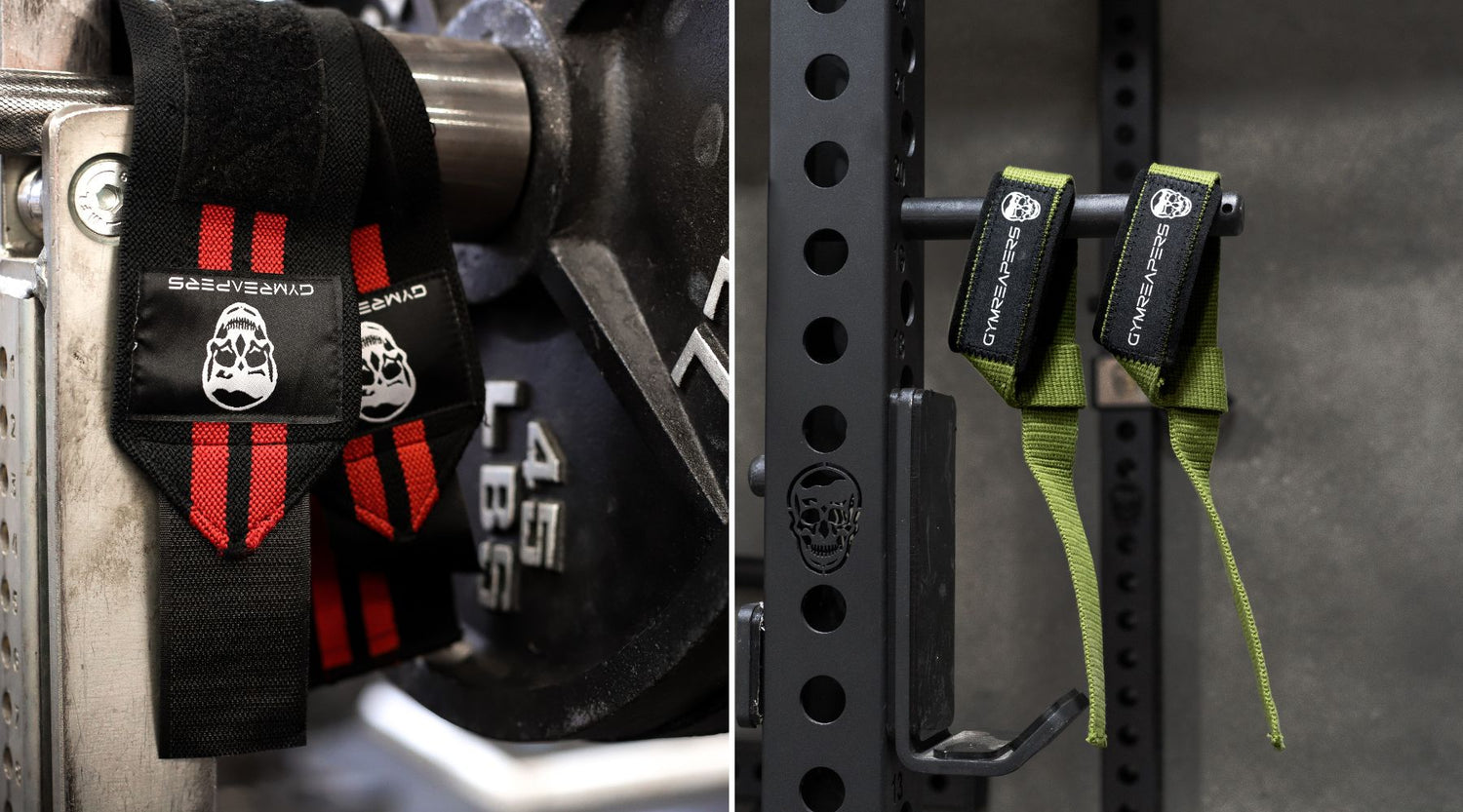
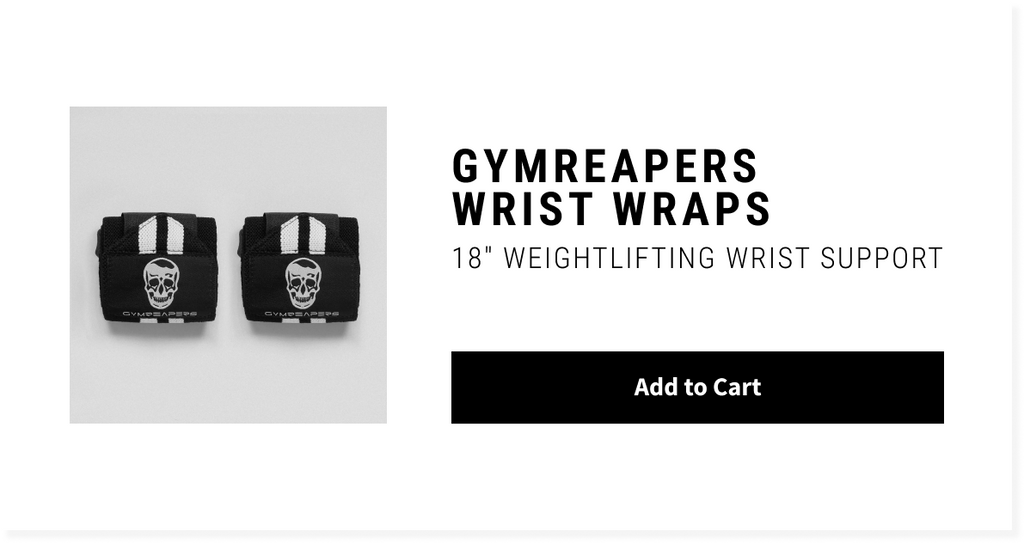
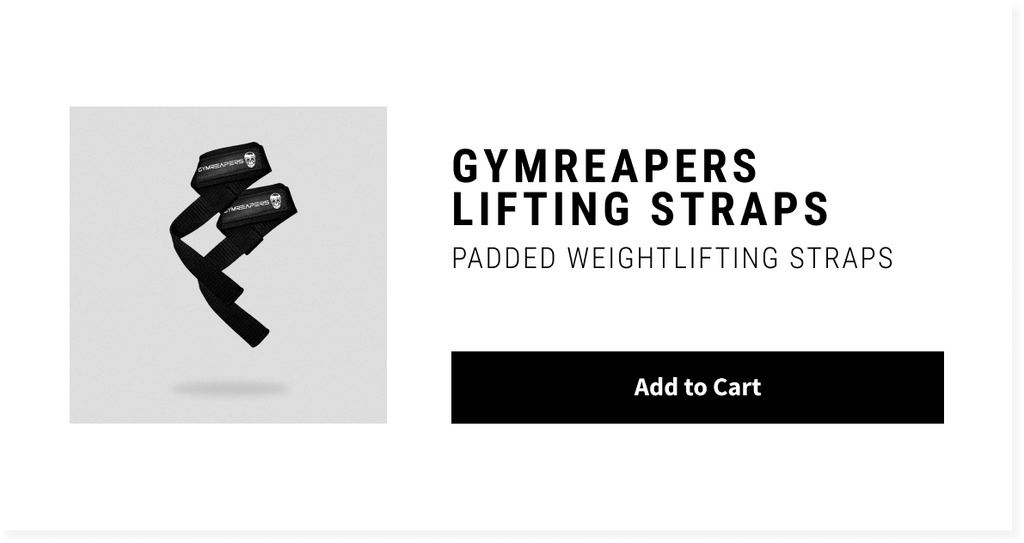

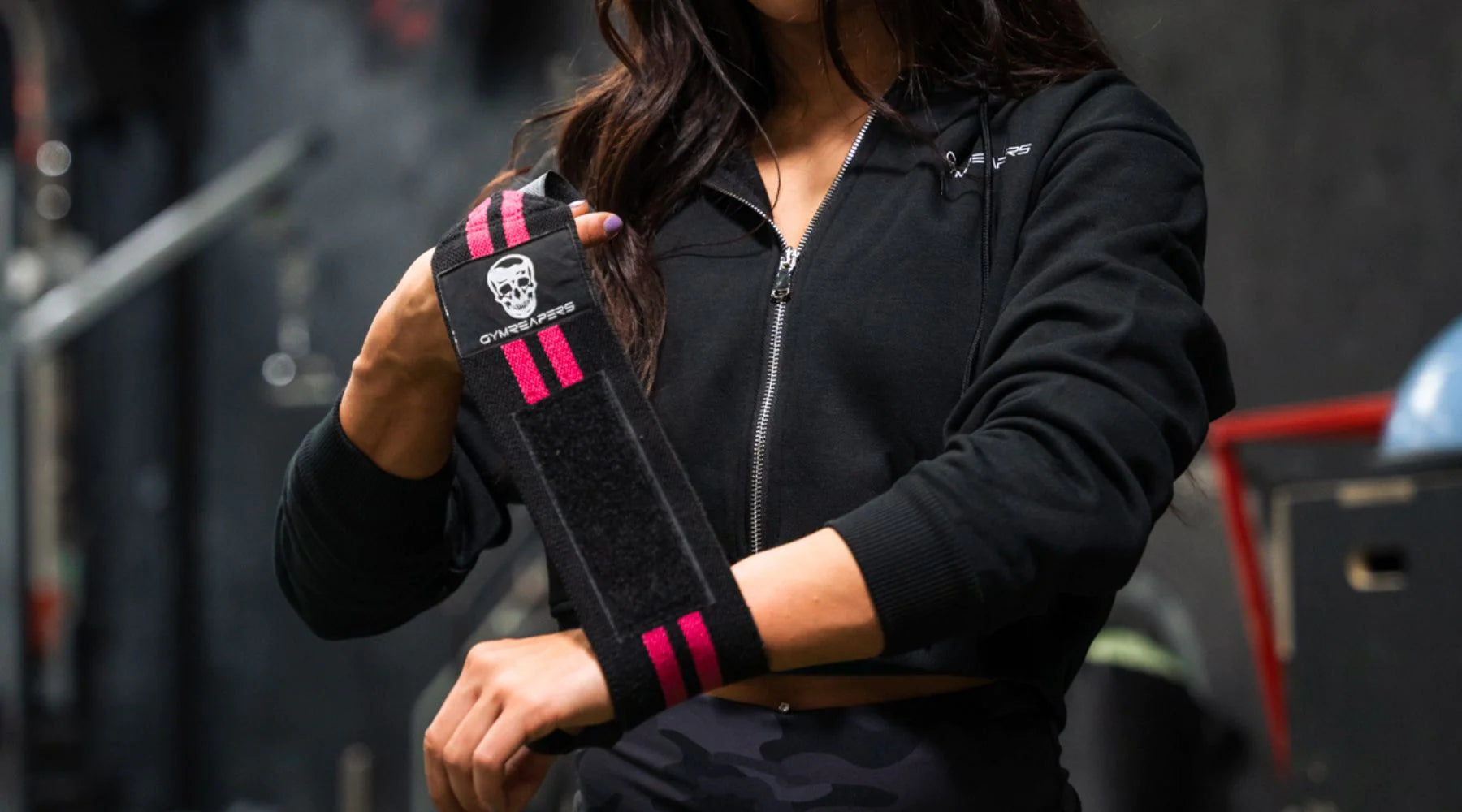
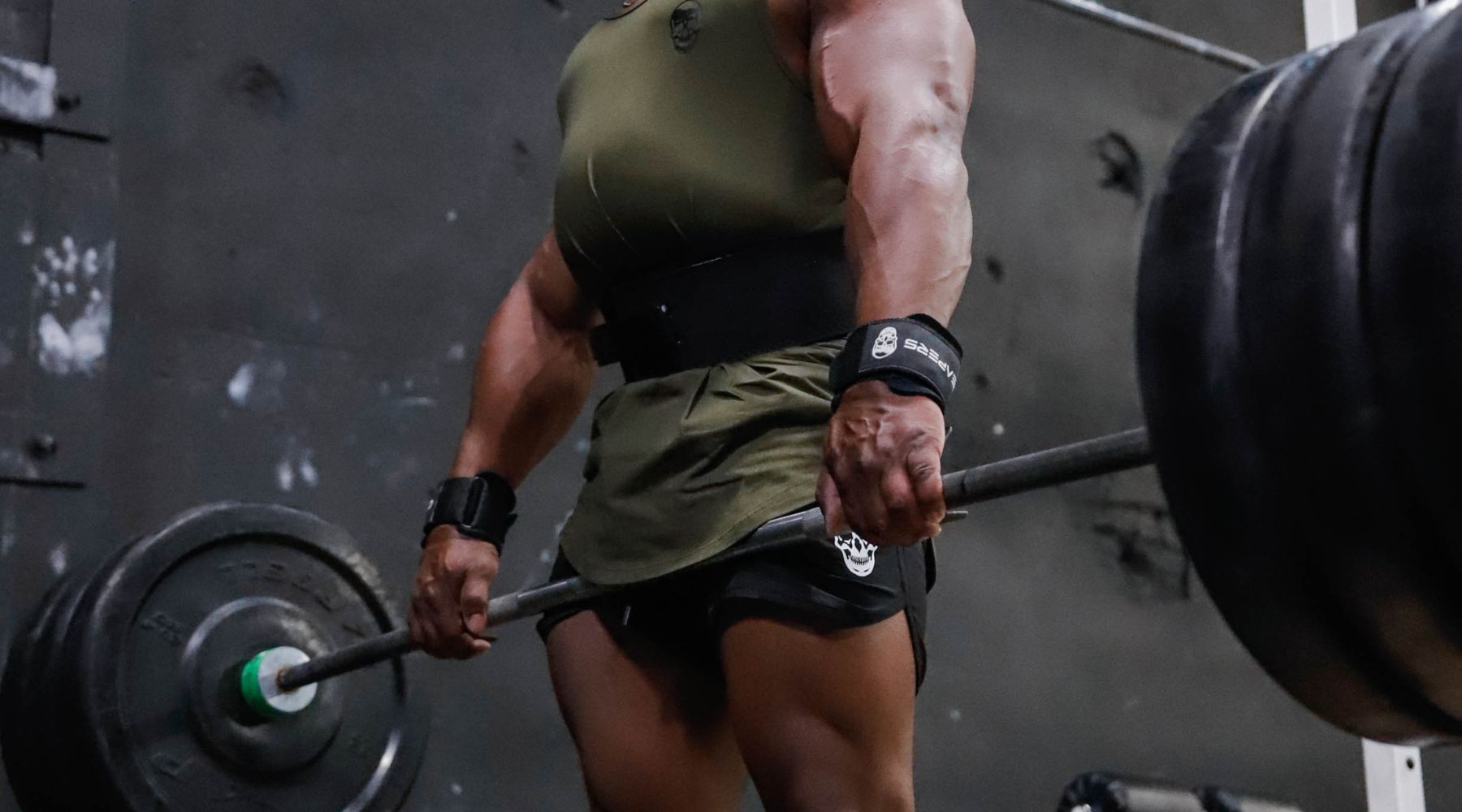
Leave a comment
All comments are moderated before being published.
This site is protected by hCaptcha and the hCaptcha Privacy Policy and Terms of Service apply.